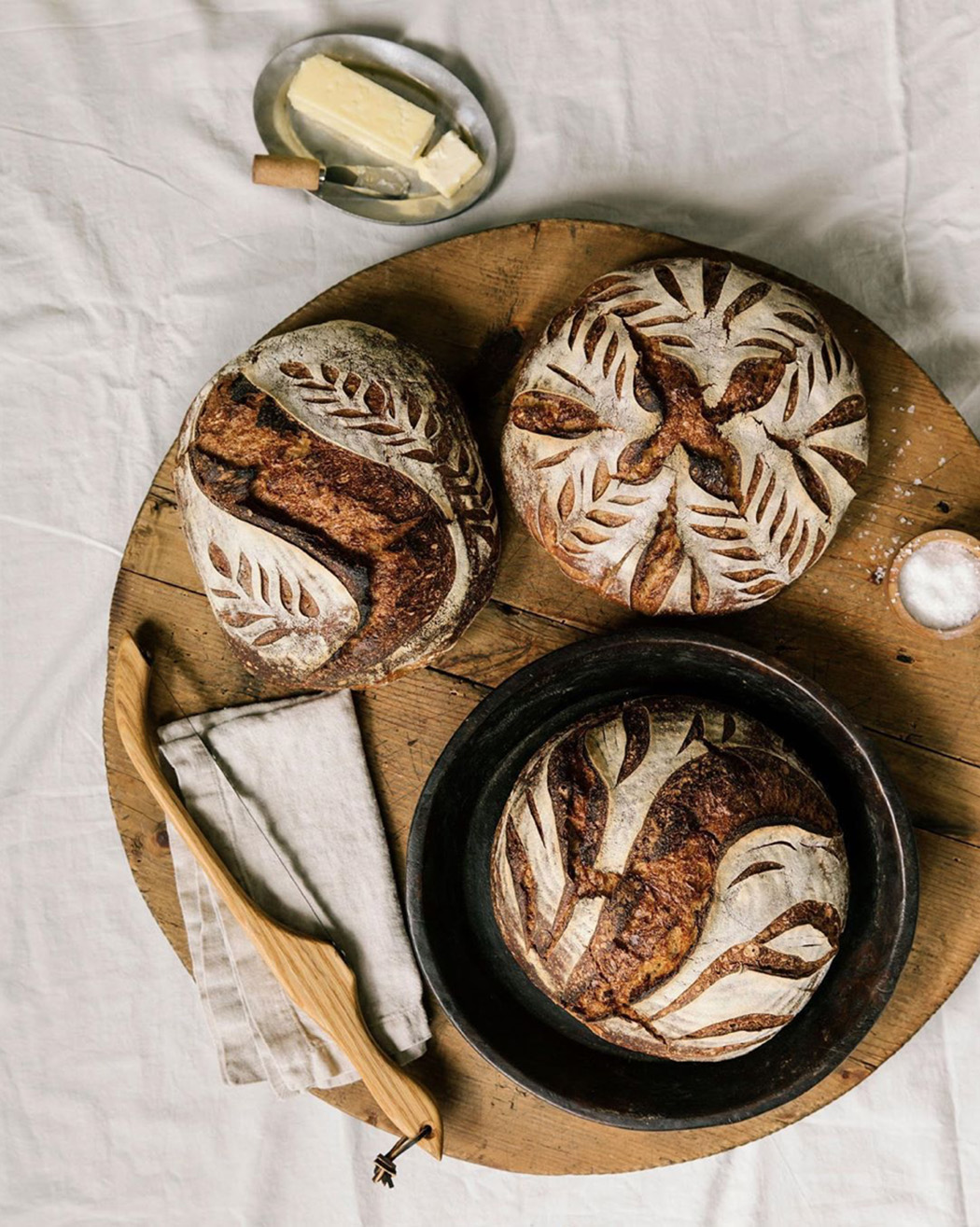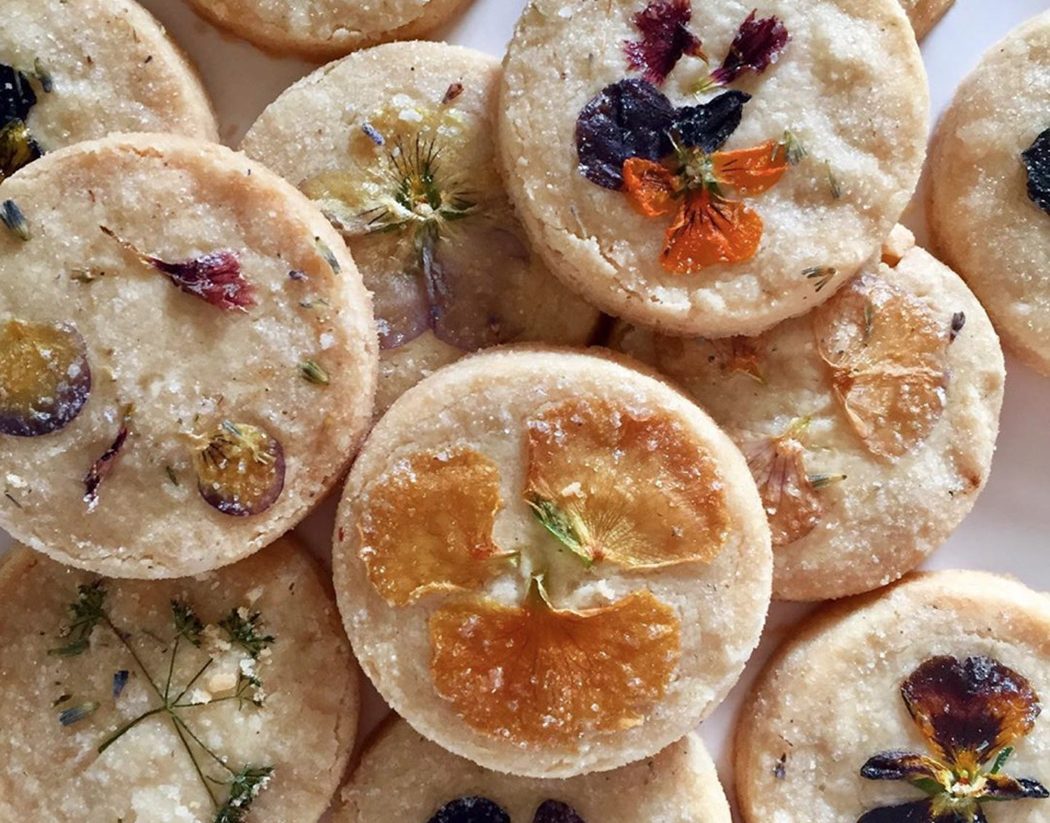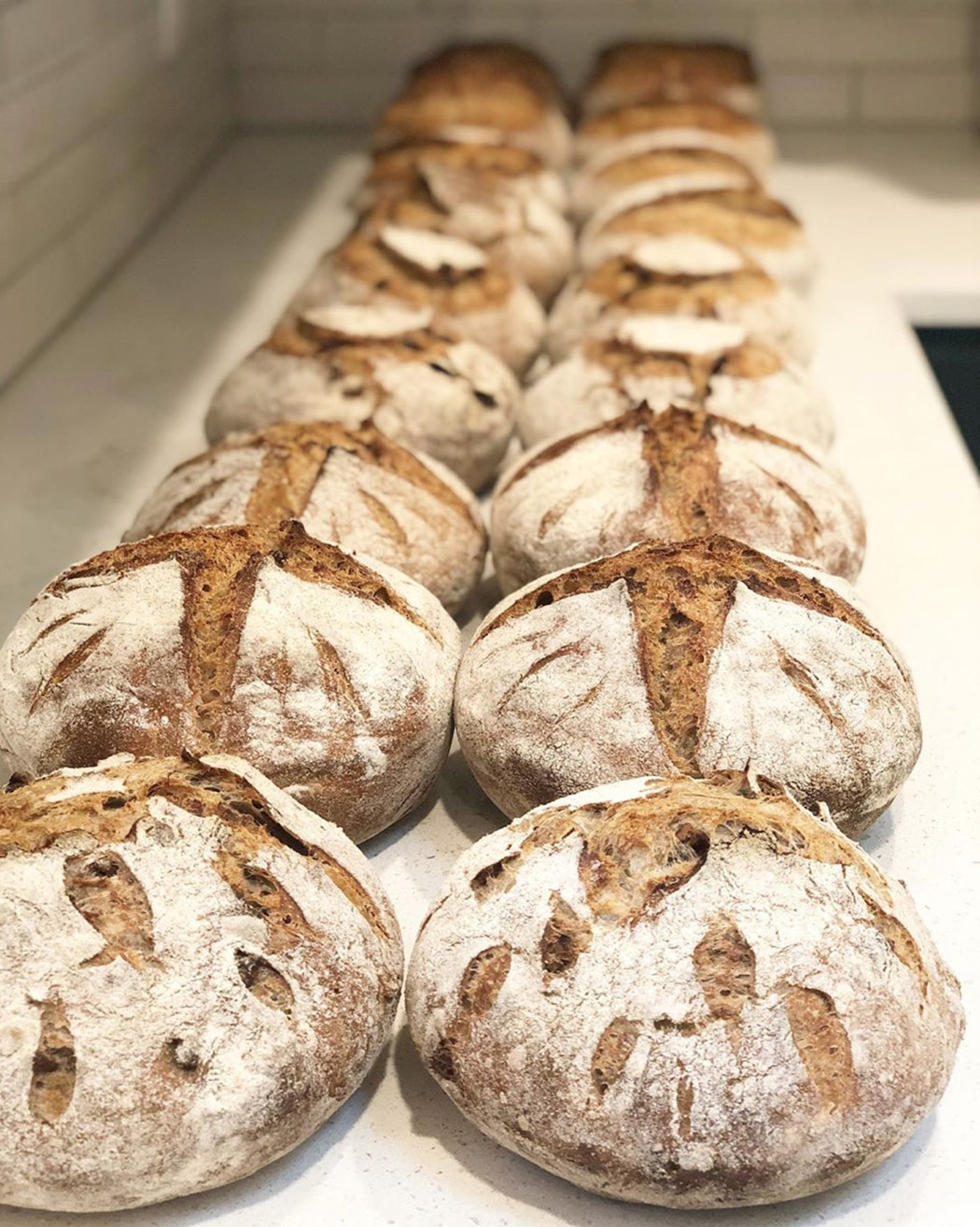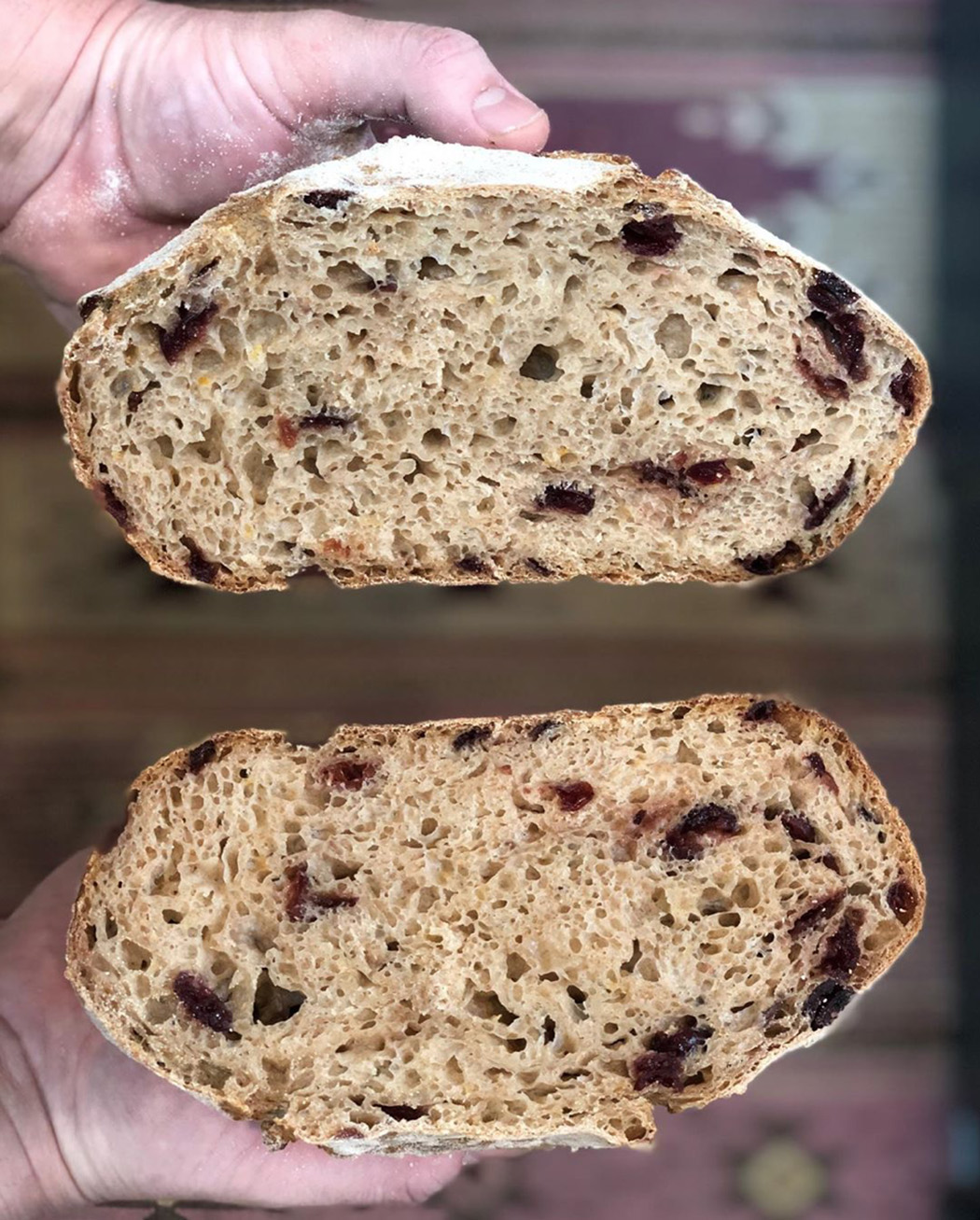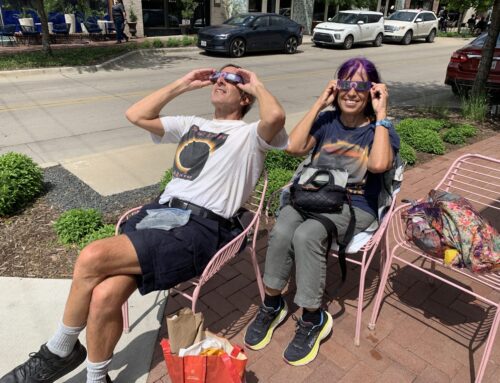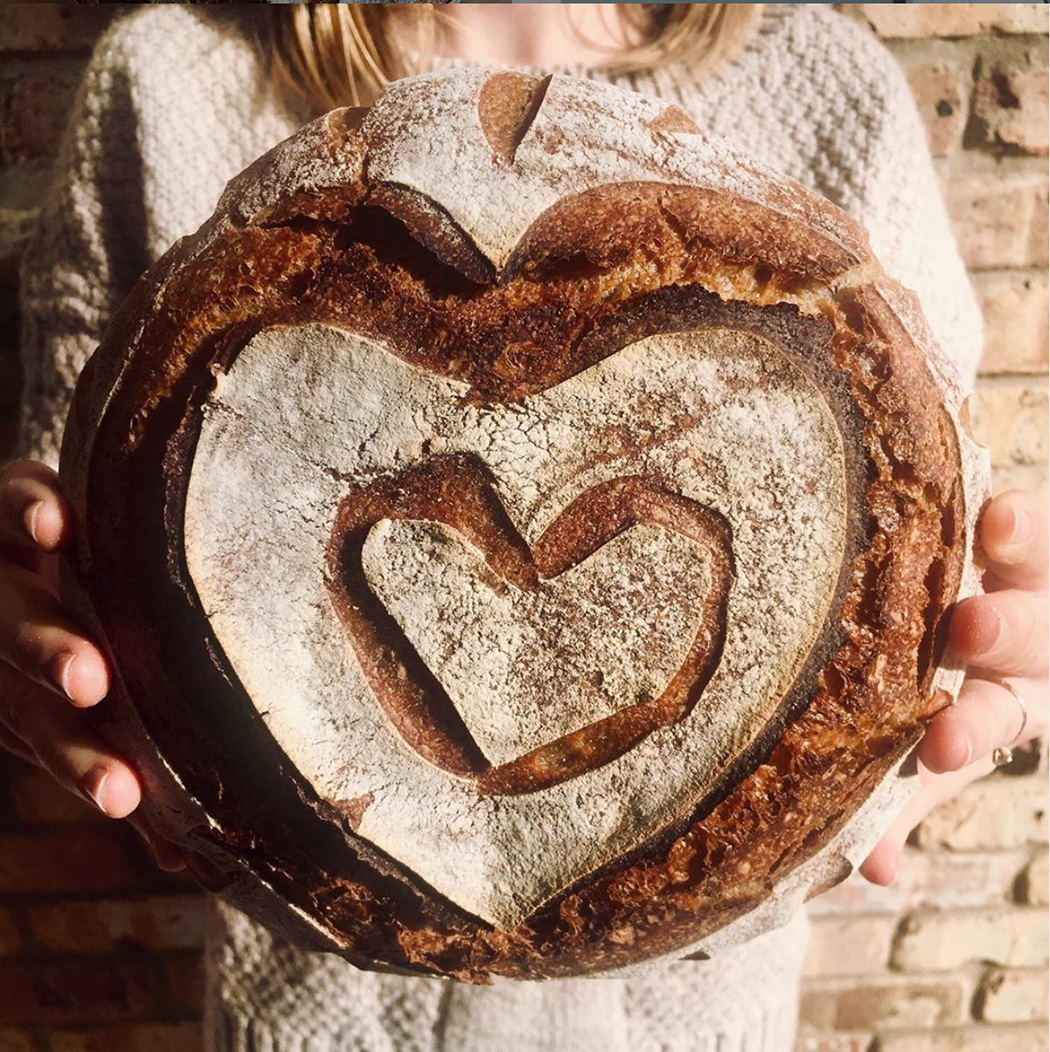
Photo by Kelsey Foster
LOW-CARB FATIGUE, widespread anxiety, and stay-at-home orders combined for a gluten-filled storm of bread obsession while people were on pandemic lockdown. These Oak Cliff home bakers turned their sourdough skills into cottage industries, producing small batches of loaves out of their kitchen ovens to satisfy a surging demand for homemade bread.
KULUNTU BAKERY
Stephanie Leichtle-Chalklen started Kuluntu Bakery in Coppell, where she grew up, upon returning to Texas after living in New York City and South Africa. The business moved to Oak Cliff when she and her husband, Warren, moved here about a year ago. Normally the bakery offers a variety of breads to order as well as pastries and cakes. But during stay-at-home orders, demand was so high that Kuluntu was only offering sourdough loaves via its “loaf of the week club.” It’s an exclusive club. She only makes about 48 loaves a week. Customers pick up their loaves, which cost $8 each, at their home near the Bishop Arts District. They devised a basket-drop system from their second-story balcony for no-touch pickup. The couple also offers events in their home, normally.
Stephanie teaches baking classes, including a full-day intensive sourdough bread course for as many as eight people at a time. Two online sourdough classes with 70seats each sold out quickly when they were offered in April.
“Those are opportunities for learning something about baking but also a communal event,” she says. “I want people to get to know each other, and there’s a lot of time for socializing. It’s a fun, social class.” She moved the classes online during stay-at-home orders. But their other offering can’t be done online, hosting “supper club” dinners for eight people at a time, focused on South African cuisine and culture. Warren is from South Africa, and they lived there as a couple for six months in 2018.
“It’s a seated meal with paired wines,” she says. “Strangers sit around the table and get to know each other and learn about South Africa. It’s definitely my favorite thing to host.”
Before coronavirus hit, they were planning to launch a series focused on women in food, highlighting female chefs and business owners.
On post-coronavirus demand:
“It really has increased very dramatically, the demand for bread,” Stephanie says. “We had to start a new pickup date.”
On the bread trend:
“I’ve been baking bread for awhile, and just to see so many people baking and so many people making starters is kind of funny to me, but it’s great. There’s been a lot more interest in it lately. I think it also has to do with people supporting local products, local businesses and wanting cleaner foods.”
On low-carb blowback:
“It’s interesting hearing people’s responses to my business. They say, ‘Oh, no, I’m keto, I don’t eat any carbs.’ There are definitely people who are still on that wagon, but I do see that shifting.”
DEPARTMENT OF BREAD
Bread-making was just a hobby for J.P. Hossley of Beckley Club Estates. That is, until the pandemic shutdown the businesses he owns with his wife, Erin, Neighborhood store and gallery and their AIRBNB rentals. Now he’s turned his pastime into a hustle.
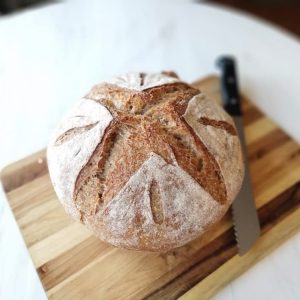 At the end of March, he was producing 10 or more loaves a day of several varieties — rye sourdough with caraway seeds; cranberry, orange zest and coriander sourdough; toasted walnut, lemon zest and herbes de Provence sourdough; and country white. With prices from $5-$9 each, and $2 for a ball of sourdough pizza dough, he’s not making a ton of cash, about $30 a day.
At the end of March, he was producing 10 or more loaves a day of several varieties — rye sourdough with caraway seeds; cranberry, orange zest and coriander sourdough; toasted walnut, lemon zest and herbes de Provence sourdough; and country white. With prices from $5-$9 each, and $2 for a ball of sourdough pizza dough, he’s not making a ton of cash, about $30 a day.
“I love that I can provide something made with love to people that need something to look forward to,” he says.
A friend who owns a restaurant is sourcing his flour. Most of his customers are his Beckley Club Estates neighbors, but he’s now supplying bread for the market at Oddfellows restaurant in Bishop Arts.
Hossley only started making bread a little over a year ago. His sourdough starter was born on Feb. 22, 2019. He found inspiration in Nancy Silverton’s book “Breads from the La Brea Bakery” and used her starter recipe. He also read Ken Forkish’s book “Flour Water Salt Yeast” and “Tartine Bread” by Chad Robertson.
“I taught myself how to make bread by reading from the pros and a whole lot of determination to get it right,” he says.
“I love that I can provide something made with love to people that need something to look forward to.”
The Department of Bread’s tips for new bread-bakers
When working with wet sourdough dough, I like to keep my gloved hands wet. It keeps the dough from sticking to you as much.
My bread is this:
- 1000 grams flour
- 800 grams hydration
- 200 grams levian
- 20 grams salt
Always “autolyse.” That is, mix flour and water and let it rest for two hours.
I don’t knead the dough, instead I use the “pincer and fold” methods, which can be found on YouTube.
I normally use water that is between 85-90 degrees.
Always bake your bread to 210 degrees. That kills any bacteria and ensures a fully developed bread.
Use a Dutch oven to get a nice rise out of your bread; the Dutch oven slows the bread to steam rise, much like a commercial steam- injected oven.
I bake at 500 degrees, 25 minutes with the Dutch oven lid on and then 15 minutes with it off.
Don’t burn your bread; cover it with tin foil if the edges start to burn.
Things get very hot, so be careful. I’ve burned myself several times. Use long heat-resistant oven mitts.
All ovens are different, all kitchens are different, so you may have to adapt things to get your bread just right.
If you adapt a recipe, write it down just in case it works even better than your last.

